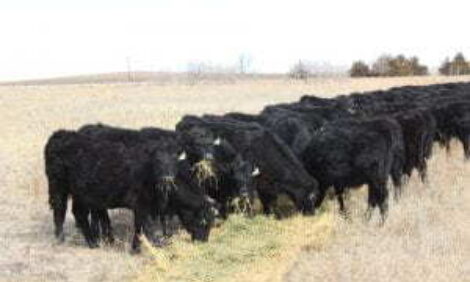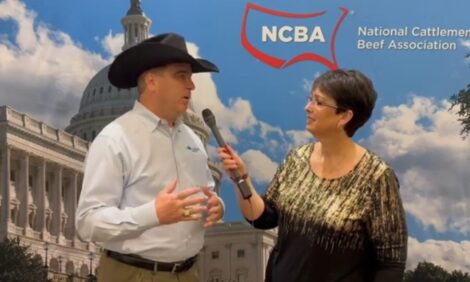



CoBank's Tanner Ehmke shares 2023 dairy expectations for US
Learn about the migration of US dairy herdTanner Ehmke, dairy economist for CoBank, recently spoke to The Dairy Site’s Sarah Mikesell at the 2022 World Dairy Expo in Madison, Wisconsin, USA.
Expectations for the dairy industry
2022 was a phenomenal year for the dairy industry, with record high milk prices and production costs were still catching up, according to Ehmke.
As 2023 approached, the industry saw production costs continue to rise, while feed costs have peaked and stabilized, but costs remain higher than normal and milk prices have moderated. Ehmke is anticipating some margin compression in 2023.
“If you're a dairy farmer, what do you do with this outlook of potential moderation continuing into 2023 with resilient feed and labor costs?” asked Ehmke. “Farmers should have pulled as much cost as they can from 2022 into 2023 such as making advance feed purchases and extending any current contracts in an effort to deal with the margin compression in the market,” noted Ehmke.
The US saw milk growth occur in 2022. The USDA milk report showed cow numbers have risen more than anticipated and productivity was higher, Ehmke said. That may be an early sign the US dairy industry is quite resilient, and farmers have respond positively to the report.
Migration of US dairy herd
“One of the reasons why we're seeing milk production make these gradual, incremental increases is because of the migration of the herd to lower cost areas of the United States,” said Ehmke. “The movement is showing growth in Texas, South Dakota and other central states.”
According to recent milk reports, Texas saw an increase of 30,000 head and South Dakota reported an estimated increase of 22,000.
“The phenomenal growth in these areas is significant,” Ehmke said. “It’s making up for some of the contraction that we're seeing elsewhere around the country.”
If the trend continues in 2023, the US is going to continue to see increases in herd growth and productivity, and that means increased production that allows for a moderation in milk prices.
"For several years the migration of the herd away from the coastal regions, like California and Pennsylvania, is moving further inland where there’s cheaper land, cheaper water, cheaper feed and cheaper labor,” he said. “Processors are following that trend, so cheese plants are opening in these central states and are creating new capacity where the herd growth is occurring.”
Dairy industry creating efficiencies
Efficiency is the name of the game when it comes to profitability in the dairy industry. For example, more automation is being created to replace manual labor, he said.
“Productivity, I think, is the key indicator of efficiency. Farmers have just been phenomenal in this country with herd management, feed management, labor management, and trying to get the most out of their cows that they can,” said Ehmke. “It really comes down to the the ingenuity of the US dairy farmer.”
Expectations for 2023
2022 was a very positive year with exports at a record high. And it’s been the bright spot for US dairy - being able to export products overseas.
“The main question I think that's on everybody's mind is the health of the world economy,” said Ehmke. “And what is the health of the US consumer at the grocery store and and how does that translate globally – how much can the world consumer absorb?”
The US has a very strong dollar that's providing a headwind for the US, he noted.
“We've got some concerning trends overseas, especially in countries like China and Europe. Europe is experiencing a recession and increases in energy costs. There are a lot of concerns in the US with the global economy slowing and the capacity of the world market to take our products,” said Ehmke. “The US has to continue to monitor the global economies going forward.”
However, Ehmke says the US has some strong customers overseas, especially in countries like Mexico and in regions of Southeast Asia, where the US sends a lot of products.
“I'm a little concerned about what's going on in China - a very important trading partner for the US,” said Ehmke. “They've still got COVID issues and that's impacting their economy along with their real estate market that always seems to be teetering on a ledge. These economic issues could potentially spill over as a financial contagion to some other important partners, especially Southeast Asia.”
US dairy exports considered globally affordable
“We're still affordable when you compare the US dairy exports to Western Europe on almost all products, and that’s going to continue to send export business to the United States,” said Ehmke.
“But I'd say, certainly in comparison to Europe, the US is an economical alternative,” Ehmke stated. “Looking forward, it appears that relationship will remain intact because Europe's economic issues such as their energy crisis and recession.”
The European dairy industry is not expected to see production growth while dealing with initiatives to reduce cow numbers and greenhouse emissions. Ehmke says these initiatives are not positive for production growth.
“This ultimately means there will be more dairy export potential for the United States,” said Ehmke.



